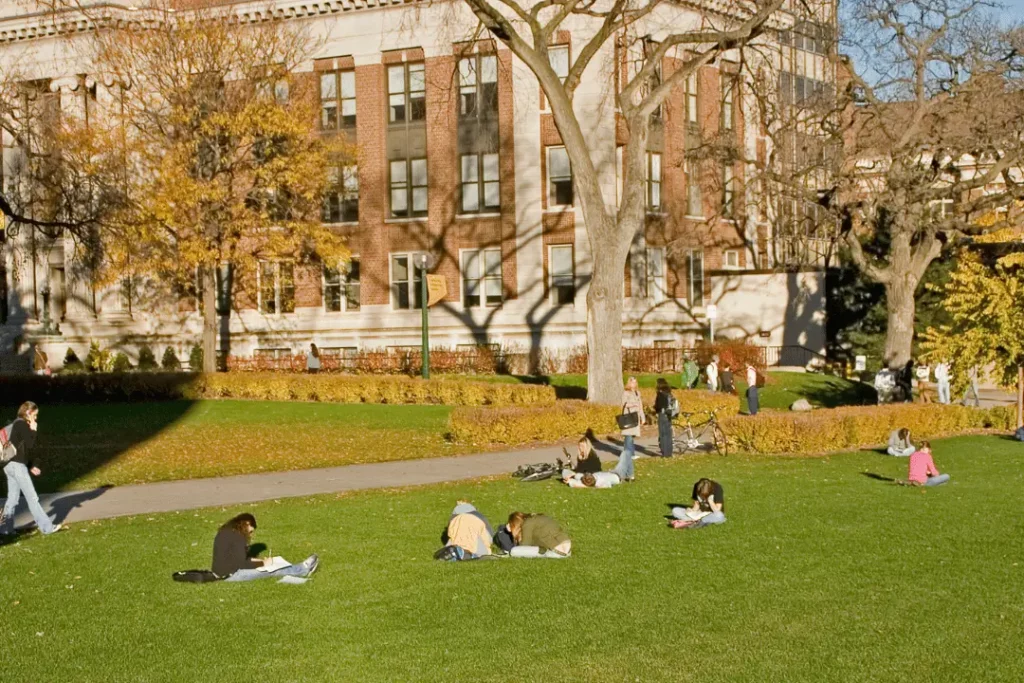
For high school students, choosing a college to attend is likely the most important decision you’ve ever been asked to make. One of the best ways to ensure you’re making the right choice is to visit the colleges on your list in person! Each university’s website contains valuable information to help you in your search, and many of them now include virtual tours, but there is no substitute for getting to experience the campus for yourself. In this blog post, we’ll explore all the ways to make the most of your visit.
A Guide to College Campus Visits
Here’s a list to help you get organized and ensure you don’t miss any key aspects during your college campus visit.
1. Do Your Research
Before arriving on campus, spend some time on each college’s website, paying attention to academics, student life, athletics, and anything else that piques your interest. As you research, take note of things you’d like to know more about. This might include questions you have about double majoring, or how credits work, or what kind of time commitments you can expect with a full course load. At the end, you’ll have a useful list of the most important questions to ask on your college visit. Showing up prepared will help you make the most of the experience and gain insight you wouldn’t be able to find online.
2. Attend an Information Session
Once you’re on campus, start your college visit with an information session. Information sessions are usually led by an admissions counselor, and they will offer an overview of their admissions process. This will help you get a better understanding of what that particular school looks for in an applicant, so when the time comes to submit your own application, you can be confident you’re putting your best foot forward.
Information sessions also offer an outline of academics on campus, including breakdowns of the general education requirements. Some schools even offer additional information sessions specifically on financial aid. At a time when many families are stressed about the cost of college, hearing directly from a financial aid officer can make a world of difference and arm you with the knowledge you need to make the right choice for your future.
3. Take an Official Campus Tour

No college campus visit would be complete without a campus tour! Campus tours are typically led by current students with firsthand experience in living on campus, taking classes, and navigating opportunities for students. Your tour guide will show you where students live, where classes are held, and where important resources like the academic advising, career advising, and study abroad offices are housed.
Your campus tour guide is also a great person to ask some of those questions you’ve prepared! They’ll let you know what their favorite campus traditions are, where students like to hang out, how long it takes them to get from one class to the next, and all those other little things that make up student life.
4. Check out Key College Facilities
After your tour, feel free to go back and spend time in some of the facilities you walked by during the tour. Stop by a library or two on campus! Not only are they full of books that might be useful in your classes, but they also might be home to media centers, makerspaces, printing stations, tutoring programs, and more.
Take a look around the gym, too. See what kinds of exercise equipment are available for students to use independently, learn more about what teams are on campus, and ask a receptionist about exercise classes for students.
And arguably most importantly, have lunch in a dining hall! The dining hall is where you’ll be eating most of your meals for the next few years, so make sure the selection works with any allergies, dietary restrictions, or personal preferences you may have.
5. Hang out at Student Life Hubs
There’s no better way to get a feel for life as a student than to hang out where the students hang out. Most colleges have several coffee shops on or near campus where students, and even professors, meet up to socialize, study, and have fun. Grab a croissant or a latte and take in the atmosphere. Do the students seem happy? What kinds of work are they doing? Do you notice students casually running into friends?
If the weather is nice, try finding a place to sit and observe on the main quad. You might find people tossing frisbees around, walking their dogs, or just enjoying the sunshine. You’ll also get to see students walking from one class to the next. Use this time to get a sense of the community and see if you could imagine yourself here.
6. Sit in on a Class

The best time to visit a college campus is while classes are in session. Check with the admissions office for a list of classes that are open for prospective students to sit in on. Sitting in on a class can help you gauge student engagement, class size, and professor enthusiasm, and you might even learn something new about an interesting topic in the process.
7. Explore the Neighborhood
It’s natural to focus on the university itself when planning a college campus visit, but don’t forget this is also an opportunity to familiarize yourself with the surrounding area. See what the public transportation is like in the area, or if you have plans to bring a car with you, what parking is like.
Ask your tour guide if they have any nearby restaurant recommendations. Pay attention to how close campus is to restaurants, bookstores, grocery stores, and other places you are likely to frequent. If you’re hoping for a calming environment, you might want to make a mental note of how many parks and green spaces there are. If you’re more interested in the hustle and bustle of city living, find out how long it would take you to get downtown from campus. The environment can have a real impact on what kinds of activities are available, so don’t forget to go off campus and take a look around.
FAQ
Why are college campus visits important?
College campuses are where you will study and possibly living for the next four years. It’s important to know not only that your university of choice has the resources you need but also feels like a place you’d be comfortable spending the majority of your time.
What should I bring to a college visit?
Yourself, a college checklist, and a positive attitude! Most tours will provide you with a campus map and a list of contacts to learn more about different topics.
Beyond that, make sure you check the weather forecast! You may be walking around outside for an hour on your tour, so bring whatever you’ll need to be comfortable outdoors, whether it’s an umbrella, sunscreen, or snow boots.
What should parents do on a college visit?
Help your student stay organized and on time to any scheduled events, like tours and information sessions. Feel free to ask your own questions as well!
How many college visits should I do?
There is no set number of college visits you should do. It depends on your personal preferences, availability, and resources. However, visiting a few colleges can give you a better understanding of the campus environment, facilities, and program offerings.
What questions should I ask on a college visit?
Ask any questions that help you get to know the school better (while avoiding topics easily found online). Some questions to consider asking:
– How hard is it to change majors?
– What’s the best class you’ve taken here so far?
– Are professors approachable?
– What kind of academic support will I have on campus?
– Is it difficult to study abroad?
Conclusion
Campus visits are a great opportunity to see for yourself what attending that school would really be like. Showing up prepared with some key questions will help you to enjoy the experience and make a decision with confidence.
For a full list of everything you need to do before, during, and after your college campus visit, download our free College Visit Checklist PDF.
And for more information about exploring schools and finding your best fit, schedule your free consultation today.








